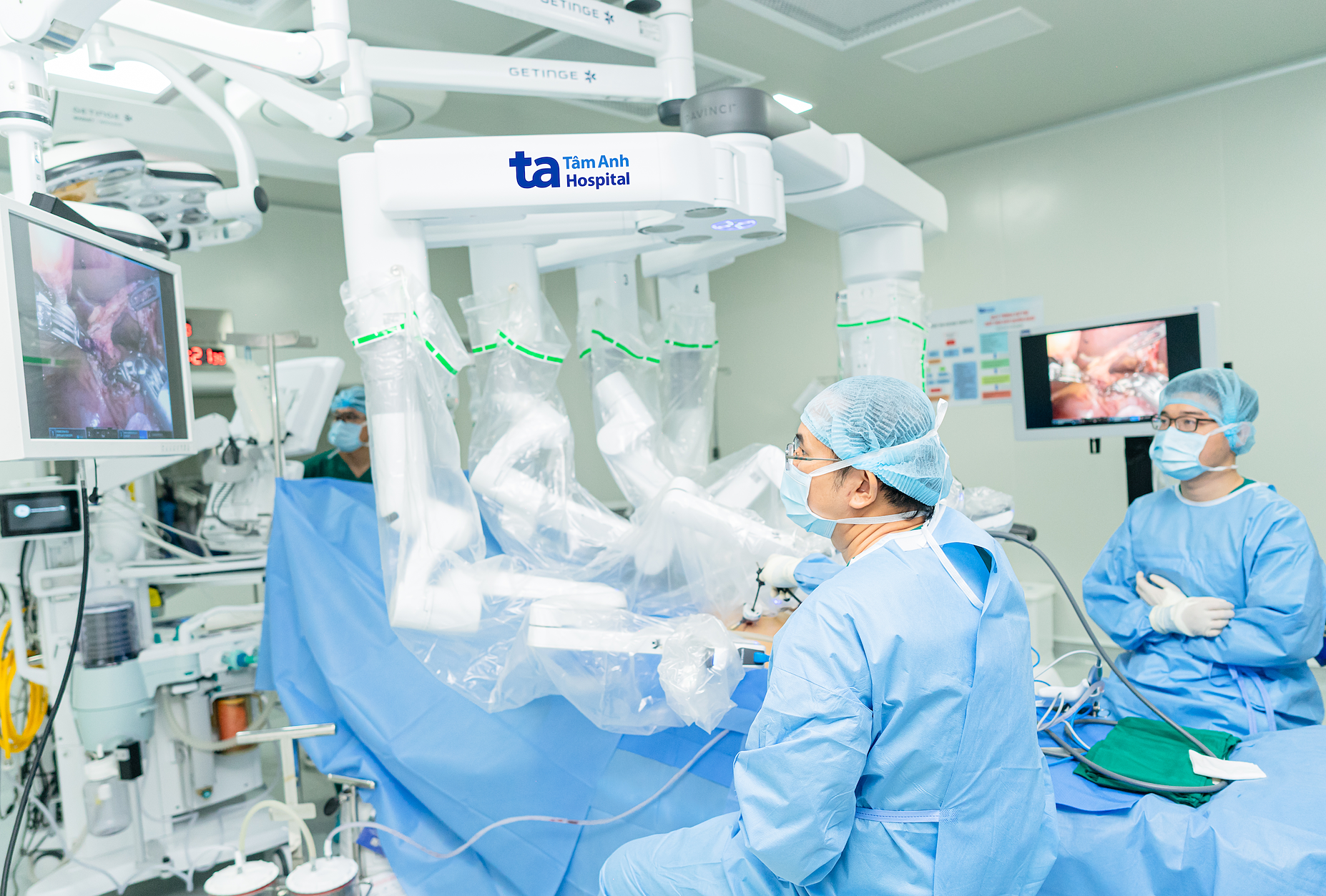Answer:
Traditionally, rectal cancer patients underwent open surgery, involving a long abdominal incision to access and remove a portion of the rectum and nearby lymph nodes. Surgeons would then reconnect the colon and rectum or create a colostomy if necessary. Now, digestive conditions, including cancers, can be treated with minimally invasive procedures like robotic-assisted laparoscopic surgery.
Robotic surgery systems utilize high-definition 3D cameras with 10x magnification, providing surgeons with a clear view of tissue structures, blood vessels, and nerves. This enhanced precision improves the thoroughness of lymph node removal, increasing treatment effectiveness and reducing recurrence risk.
 |
A robotic-assisted laparoscopic surgery at Tam Anh General Hospital. Photo: Hospital provided |
Robotic arms, with 7 degrees of freedom, enable surgeons to operate in narrow, deep, and difficult-to-reach areas like the pelvis, chest, liver, or pancreas. This precise dissection preserves healthy tissue and nerves, minimizing blood loss.
You should take your grandmother to a hospital for a thorough examination to determine the stage and specifics of her condition. This will allow doctors to recommend the most appropriate treatment. Robotic surgery assists surgeons in performing precise cutting and reconnection very close to the anus, increasing the possibility of preserving the rectum for rectal cancer patients. This can help patients avoid a permanent colostomy, maintaining their quality of life after surgery.
Dr. Pham Cong Khanh
Center for Endoscopy and Laparoscopic Digestive Surgery
Tam Anh General Hospital
| Readers can submit questions about digestive diseases here for doctors to answer. |












